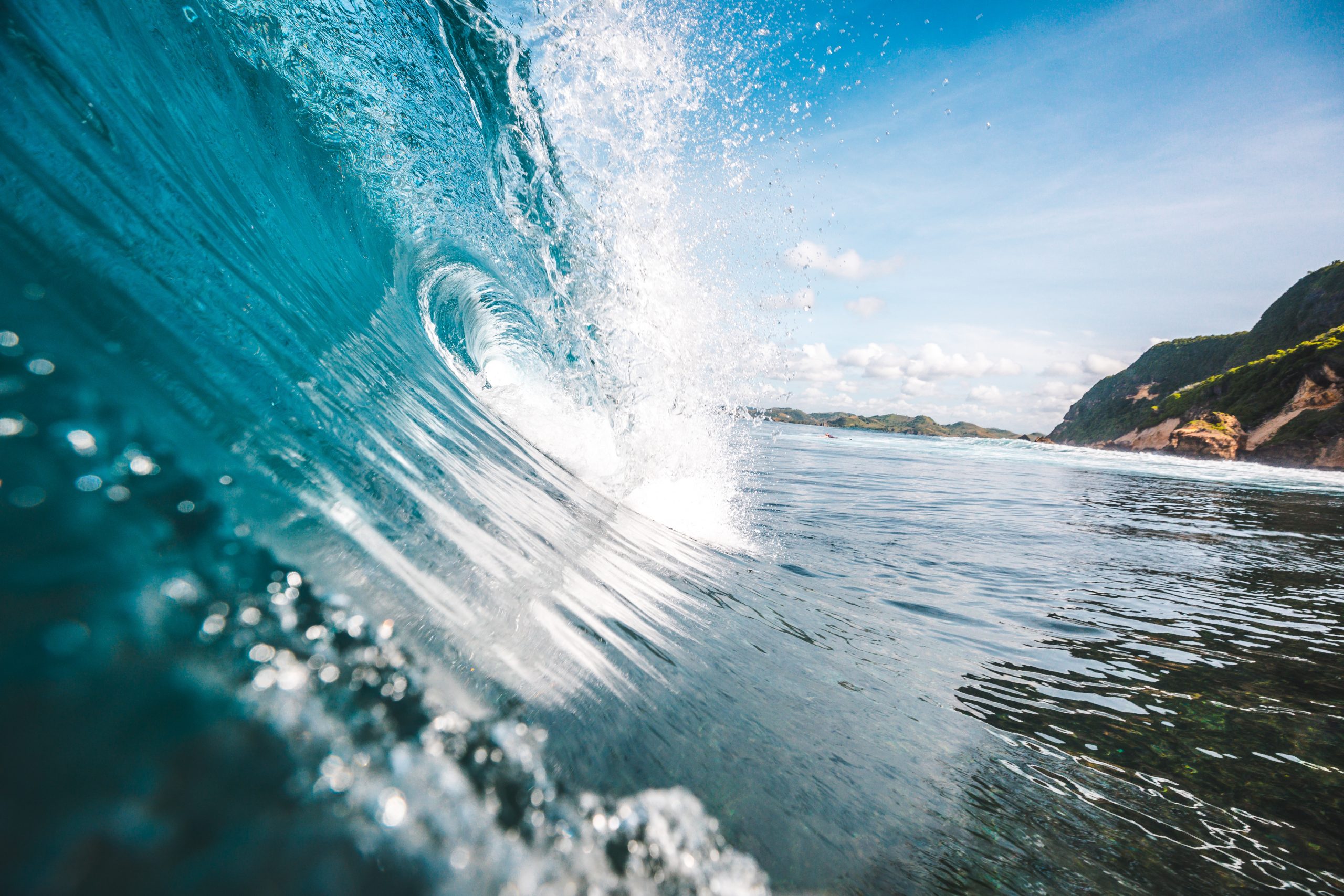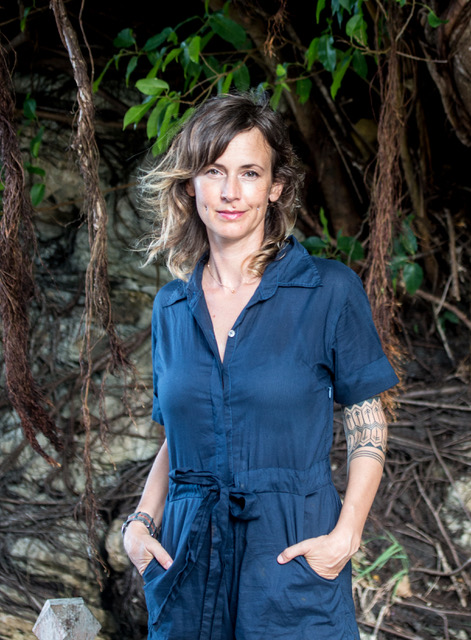Marine tourism can be a powerful tool for conservation and has the potential to protect not only fragile ecosystems but the communities which depend upon them. As oceans around the world succumb to the cascading pressures of climate change, overfishing, pollution, ocean acidification and coral bleaching, areas with active protection become increasingly precious. Marine protected areas (MPAs) have the potential to build in a measure of resilience to future shocks such as global pandemics and resultant economic collapse. However, multi-stakeholder engagement, including community buy-in and government support, is essential to long-term success.
Misool Resort was founded in 2005 in Raja Ampat, Indonesia, at the epicentre of what is generally believed to be the most biodiverse reef system on Earth[1]. The resort functions as a critical funding vehicle for Misool Foundation, a registered Indonesian charity that takes a holistic approach to marine conservation.
Misool’s private resort island is surrounded by its own 300,000-acre Misool Marine Reserve, which was leased directly from Indigenous communities in 2005. In 2007, the government overlaid this lease area with one of several MPAs in Raja Ampat, further strengthening the protection of the area. The Misool Marine Reserve comprises two distinct no-take zones (NTZs), in which all extractive practices are prohibited. The reserve, which also includes nine large uninhabited islands, is managed by the Misool Foundation, the registered non-profit arm of Misool Resort. The foundation has trained a team of rangers, who are recruited from local villages. The rangers are salaried and conducted an average of 2.7 patrol trips per day every day in 2021[2].
Before the pandemic, the Ranger Patrol was fully funded by donations from Misool Resort: in 2019, the company donated US$359,000 to the Misool Foundation[3]. At the time of writing, the resort remains closed due to Indonesia’s border restrictions. Despite the resort’s significantly reduced funding capacity, the Ranger Patrol has been able to continue during the pandemic with generous support from non-governmental organisations (NGOs).
The results of the Ranger Patrol’s vigilance have been clear and measurable: fish biomass inside the Misool Marine Reserve has increased on average by 250 percent over a six-year period, and at some sites this rose to 600 percent[4]. In 2012, scientists recorded 25 times more sharks within the reserve than just outside[5]. A 2020 study named a site within the Misool Marine Reserve as a manta ray ‘courtship supersite’, with increased sightings of pregnant females and courtship behaviour[6].
Increases in fish biomass and keystone species such as sharks and rays are highly valuable to tourism operators. The economic value of sharks and mantas on tourism is well documented, and it has been demonstrated that elasmobranchs are of more value alive than dead. For example, research has shown that individual sharks in French Polynesia have an estimated ecotourism value of about $1,200 per kilogram[7], compared with a landed value to local fishers of $1.50 per kilo for shark meat[8]. Global manta-watching revenue to operators and associated tourism expenditures has been estimated at $140 million annually[9]. In fact, manta rays are so valuable to the local economy that the Raja Ampat government declared its waters a strict shark and ray sanctuary in 2012, which in 2014 triggered the Indonesian government’s decision to fully protect both species of manta ray in Indonesian waters[10].
And it’s not just those directly involved with tourism who benefit from protection of the marine ecosystem. Coastal communities with traditional fishing grounds just outside of the Misool Marine Reserve also enjoy increased catch, closer to home. This is because the NTZs act as a ‘fish bank’: protecting fish stocks with the NTZ is akin to creating a savings account. As protected stocks reproduce, fish swim out of the NTZ in a ‘spillover‘ effect. Spillover can be understood as the interest on those savings. By limiting fishing to designated areas, community members not only protect today’s fish stocks but also stabilise their food source and potential tourism revenue for generations to come. Countless jobs have been lost as a result of the pandemic, resulting in an increased reliance on fishing globally, often in sensitive ecosystems. Establishing and maintaining the integrity of NTZs is now more important than ever, as they safeguard food availability for local people fishing in designated fishing areas.
Additional layers of economic integration are required for a truly resilient system that supports coastal communities. While local engagement and sustainable livelihoods in tourism are critical, low-impact and high-end tourism is often small-scale and therefore often unable to engage enough members of the community to reach a critical mass of support. A holistic approach to marine conservation with creative solutions is needed.
The Misool Foundation established the Djabatan Cooperative, an alternative livelihoods programme that supports the community in developing small-scale fruit orchards and vegetable gardens and manufacturing value-added products for resale. The cooperative’s name in the local Misool language, Koperasi Famembefi, translates roughly as ‘to look after one another.’ Fruits and vegetables from the organic gardens are processed to make consumer goods such as dried banana and taro chips. These products are sold locally (including to Misool Resort), thereby bolstering economic resilience in the community.
The Djabatan Cooperative provides community members with a steady and reliable income and requires minimal investment. This is in direct contrast to fishing, which requires high capital expenditure to purchase boats, fuel and fishing equipment. Furthermore, fishing is associated with high financial risk, as catch is dependent upon uncontrollable variables such as weather, currents and sea conditions. The project could easily be replicated in other conservation-adjacent areas, thereby diversifying economic opportunities and creating a more equitable distribution of benefits associated with MPAs.
In addition to generating income, the cooperative creates opportunities for community members to manage their own small businesses. The most active members have been Papuan women, a sector both the Misool Foundation and Misool Resort have struggled to engage. This is due to the customary role of women in the community, who are generally engaged in unpaid labour around the home and as caregivers.
In hindsight it became clear that the influence of women on the fishers of the community, who are predominantly men, had been underestimated. As women have become more involved in the processing of the produce into dried fruit chips, they’ve called upon their husbands, brothers, fathers and sons to assist with the harvesting. This means men are less available for fishing activity, legal or otherwise, and gain firsthand experience with a steady income not associated with marine extraction. Furthermore, women are reticent to release household income to purchase fuel for fishing when a low-financial-risk activity such as harvesting bananas is available.
While at first glance a small-scale farming initiative may seem to be outside the remit of a marine conservation foundation, preliminary results suggest a decrease in fishing pressure and an increase in community support for the Misool Foundation. By engaging more women from the community in a sustainable livelihood, we build resilience into the local economy, decoupling it from both fishing and tourism revenues. The Djabatan Cooperative also empowers Papuan women, who experience overlapping and intersecting discrimination.
No-take zones and alternative livelihood programmes have been absolutely critical to protecting ecosystems, building sustainable tourism, and bolstering the local economy. However, these private sector and NGO initiatives can only be assured long-term success when paired with strong governmental support. Spatial mapping and long-horizon management plans are needed to ensure sustainable development. A 2017 carrying capacity study of Raja Ampat was authored by scientists from Conservation International, Universitas Papua and the University of Pattimura[11]. This study lays the groundwork for authorities to cap the numbers of tourists and thereby limit pressure on the ecosystem. Rather than measuring success in number of visitors, tourism-related revenue should be prioritised along with environmental and social metrics such as biomass and keystone species recovery, reduction in carbon footprint, banning single-use plastics, and establishing community health and education initiatives. Indeed, Misool Resort’s annual financial report includes a section titled ‘Conservation Dividends’, which tracks fish biomass, shark populations, recycling ocean-bound plastics and reef restoration. A further category called ‘Sustainability Metrics‘ measures carbon dioxide per guest night and renewable energy production. Misool Resort also tracks equality metrics to work towards a more diverse workplace.
Sensitive marine ecosystems simply cannot withstand the pressures of mass tourism. Without a government-managed cap on numbers and a zoning system, destinations are at risk of collapsing under the weight of their own success and being forced to close, creating an economic vacuum for those reliant on tourism. Thailand’s iconic Maya Bay suddenly closed in 2018 as a result of overtourism. Over 80 percent of the corals around Maya Bay were destroyed by litter, boats and sunscreen. Before the closure, the location was generating an estimated $12 million per year in revenue[12]. After three years of active environmental restoration projects, the destination finally reopened with new restrictions.
A government-managed zoning system will further strengthen the resilience of tourism destinations. Demarcating specific areas for different types of tourism is key, as each type has advantages but can only co-exist through effective management. For example, exclusive tourism destinations often employ a relatively high number of local people but may be foreign-owned and managed. Financial benefits to the community are often experienced as salaries, tax revenue, community programmes and creating visibility for a destination on a global platform. Smaller-scale, budget ecotourism is also valuable, as these operations are often locally owned and operated. However, the two types of tourism must be managed so they can co-exist and maximise the benefit to all parties.
Another layer of resilience can be built in sensitive coastal areas by diversifying income streams which are independent from both tourism and marine extraction. By issuing blue carbon credits for the protection of seagrass beds and mangrove forests, governments can guarantee revenue even in the face of a sudden disruption in tourism while simultaneously protecting the environment.
The pandemic and the resulting shutdown of tourism has demonstrated that a multi-stakeholder approach to marine tourism and marine conservation is essential. Communities, private enterprise and governments must work together to create multiple layers of protection and incentives, financial and otherwise, for continuous protection of the ecosystem.
—–
[1] S.A. McKenna, G.R. Allen and S. Suryadi, “A Marine Rapid Assessment of the Raja Ampat Islands, Papua Province, Indonesia,” Conservation International Rapid Assessment Program, 2002.
[2] Misool Foundation, Impact Report 2021, https://static1.squarespace.com/static/588f4f236a4963c41010a7d9/t/627e882d8b3185599e4cf270/1652459583718/Impact+Report+2021_FINAL_web.pdf.
[3] Misool Foundation, Annual Report 2019, https://static1.squarespace.com/static/588f4f236a4963c41010a7d9/t/5f8d6d4bed952341d8aa7bd4/1603104085153/Misool+Foundation+Annual+Report+2019_FINAL.pdf.
[4] Mark Allen, Murdoch University, 2013.
[5] V.H. Jaiteh et al., “Higher Abundance of Marine Predators and Changes in Fishers’ Behavior Following Spatial Protection within the World’s Biggest Shark Fishery,” Frontiers in Marine Science, 7 April 2016.
[6] E. Setyawan et al., “Natural History of Manta Rays in the Bird’s Head Seascape, Indonesia, with an Analysis of the Demography and Spatial Ecology of Mobula alfredi (Elasmobranchii: Mobulidae),” Journal of the Ocean Science Foundation 36 (2020): 49–83.
[7] E. Clua, N. Burray, P. Legendre, J. Mourier and S. Planes, “Business Partner or Simple Catch? The Economic Value of the Sicklefin Lemon Shark in French Polynesia,” Marine and Freshwater Research 62 (2011): 76470.
[8] U.R. Sumaila, A.D. Marsden, R. Watson and D. Pauly, “A Global Ex-vessel Price Database: Construction and Applications,” Journal of Bioeconomics 9 (2007): 39–51.
[9] M.P. O’Malley et al., “The Global Economic Impact of Manta Ray Watching Tourism,” PLOS ONE 5, no. 8 (31 May 2013), doi:10.1371/journal.pone.0065051.
[10] Setyawan et al., “Natural History of Manta Rays.”
[11] V. Nikijuluw et al., “Daya-Dukung-Pariwisata-Berkelanjutan-Raja-Ampat 2,” Conservation International–Indonesia, 2017.
[12] H. Ellis-Petersen, “Thailand Bay Made Famous by The Beach Closed Indefinitely,” Guardian, 3 October 2018, https://www.theguardian.com/world/2018/oct/03/thailand-bay-made-famous-by-the-beach-closed-indefinitely.


 Previous
Previous


